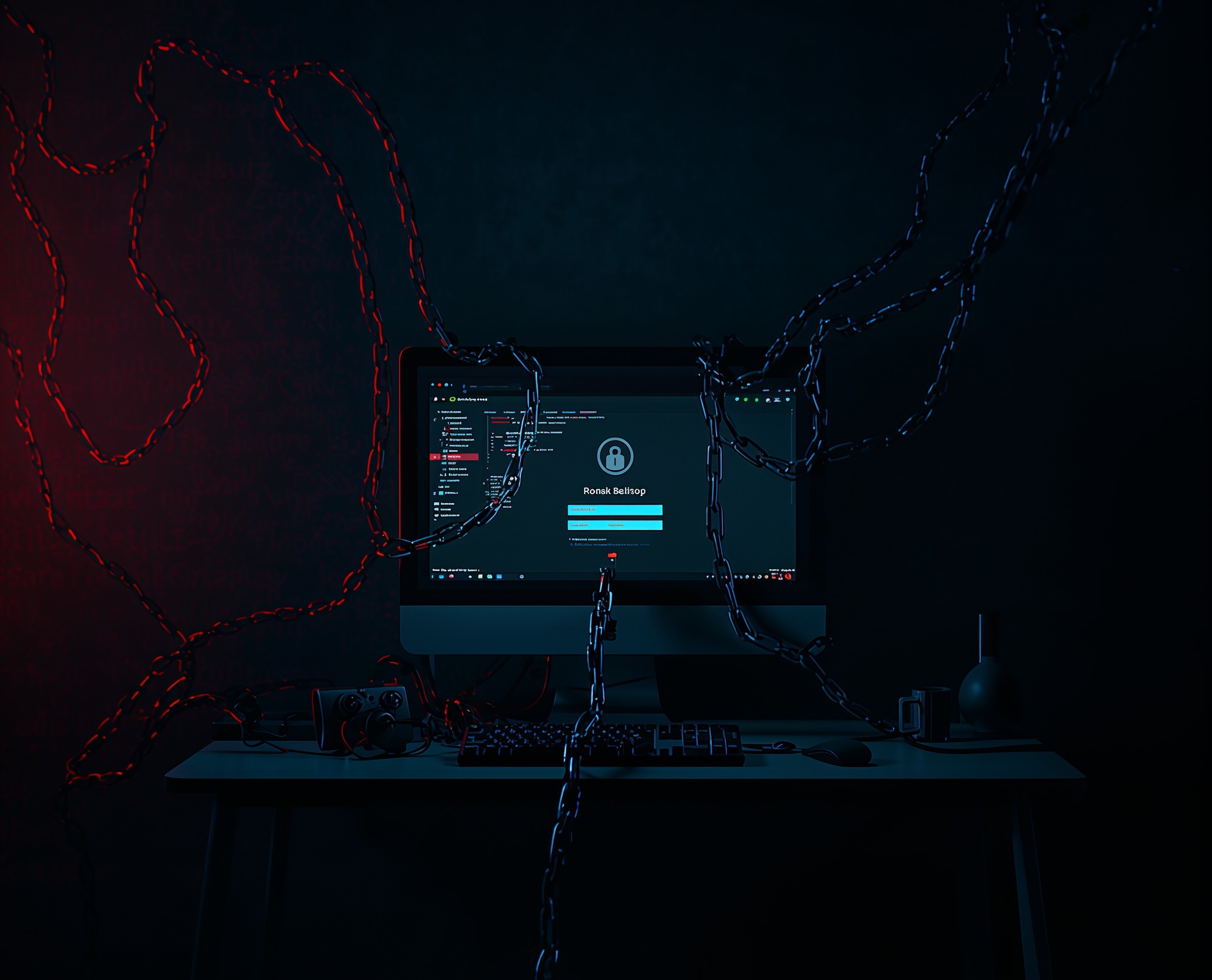Criminal crews blend cyber access with physical theft. They infiltrate trucking and logistics firms, deploy remote monitoring and management (RMM) tools, and then alter dispatch workflows to steal freight. Because these tools are legitimate and often signed, traditional controls hesitate to flag them. Consequently, defenders must validate where RMM lands, which privileges it receives, and how it changes booking and pickup operations.
𝐓𝐡𝐫𝐞𝐚𝐭 𝐎𝐯𝐞𝐫𝐯𝐢𝐞𝐰: 𝐑𝐌𝐌 𝐚𝐬 𝐚 𝐂𝐚𝐫𝐠𝐨-𝐓𝐡𝐞𝐟𝐭 𝐄𝐧𝐚𝐛𝐥𝐞𝐫
Operators first secure access that looks routine. They compromise email accounts to hijack active conversations. They spear-phish carriers and brokers. They post fraudulent load listings from hacked load-board accounts. Next, when a target engages, they deliver booby-trapped MSI/EXE installers that deploy legitimate RMM platforms such as ScreenConnect, SimpleHelp, PDQ Connect, Fleetdeck, N-able, or LogMeIn Resolve. Sometimes they chain them PDQ Connect drops and installs ScreenConnect and SimpleHelp to persist and diversify remote control paths. Once inside, they survey systems, deploy credential harvesters, and pivot to portals that handle booking, dispatch, and notifications.
𝐂𝐫𝐢𝐦𝐢𝐧𝐚𝐥 𝐎𝐛𝐣𝐞𝐜𝐭𝐢𝐯𝐞: 𝐓𝐮𝐫𝐧 𝐃𝐢𝐠𝐢𝐭𝐚𝐥 𝐀𝐜𝐜𝐞𝐬𝐬 𝐢𝐧𝐭𝐨 𝐏𝐡𝐲𝐬𝐢𝐜𝐚𝐥 𝐋𝐨𝐬𝐬
After foothold, crews change bookings, block dispatcher notifications, and add attacker devices to phone extensions. Then they bid on legitimate loads under compromised identities, coordinate pickups, and move goods off network-visible routes. Because the operation rides on valid accounts, logistics systems often record the actions as normal business flow.
𝐓𝐞𝐜𝐡𝐧𝐢𝐜𝐚𝐥 𝐁𝐫𝐞𝐚𝐤𝐝𝐨𝐰𝐧: 𝐇𝐨𝐰 𝐑𝐌𝐌 𝐋𝐚𝐧𝐝𝐬 𝐚𝐧𝐝 𝐒𝐭𝐢𝐜𝐤𝐬
Phishing commonly drops a signed installer. Security stacks accept it because the payload is a legitimate RMM. Installers register services, open firewall rules, and set auto-start. Meanwhile, the operator enrolls the host into a tenant they control. Next, they blend with IT workflows: remote shell, file transfer, screen control, and process management. Finally, they deploy credential tools, harvest browser and portal creds, and validate access to broker portals, TMS/dispatch apps, and email.
𝐀𝐫𝐭𝐢𝐟𝐚𝐜𝐭𝐬 𝐚𝐧𝐝 𝐈𝐧𝐝𝐢𝐜𝐚𝐭𝐨𝐫𝐬
Expect new services named like support tools, MSI install events, scheduled tasks, and unfamiliar RMM domains shortly after enrollment. Watch for dual RMM presence (for example, PDQ Connect plus ScreenConnect/SimpleHelp) landing within minutes of each other. Track mailbox rules, new MFA devices, and dispatcher phone extension changes. On load boards, look for atypical IPs, new device fingerprints, and sign-ins at odd hours.
𝐒𝐜𝐨𝐩𝐞 𝐚𝐧𝐝 𝐓𝐚𝐫𝐠𝐞𝐭𝐢𝐧𝐠
Campaigns hit carriers, freight brokerages, and integrated supply-chain providers, from small fleets to national firms. Moreover, crews favor high-turnover commodities such as food and beverage, since resale moves quickly and inspection cycles create cover.
𝐃𝐞𝐭𝐞𝐜𝐭𝐢𝐨𝐧 𝐚𝐧𝐝 𝐕𝐚𝐥𝐢𝐝𝐚𝐭𝐢𝐨𝐧: 𝐏𝐫𝐚𝐜𝐭𝐢𝐭𝐢𝐨𝐧𝐞𝐫 𝐂𝐡𝐞𝐜𝐤𝐥𝐢𝐬𝐭
Start with endpoints, then pivot to the business layer.
• Query recent MSI/EXE installations that created services with vendor-like names; correlate with first outbound to RMM control domains.
• Hunt for dual RMM installs within one change window (PDQ Connect → ScreenConnect/SimpleHelp).
• Alert on new remote-control enrollments and unapproved tenants; verify the approver and reason.
• Review browser credential access telemetry; look for rapid harvesting after enrollment.
• Compare dispatch and load-board logins with geolocation and device fingerprints; flag notification blocks or phone extension changes.
• Baseline booking cadence and detect deletions followed by fast re-booking from unfamiliar devices.
𝐌𝐢𝐭𝐢𝐠𝐚𝐭𝐢𝐨𝐧 𝐚𝐧𝐝 𝐇𝐚𝐫𝐝𝐞𝐧𝐢𝐧𝐠: 𝐒𝐭𝐨𝐩 𝐭𝐡𝐞 𝐁𝐥𝐞𝐧𝐝-𝐈𝐧
Block or challenge unsanctioned RMM by policy. Require allow-lists for remote tools and enforce MFA + device trust for load-board and dispatch portals. Monitor service creation and tenant enrollment; quarantine hosts that enroll into unknown tenants. Rotate compromised mailboxes, remove rogue inbox rules, and reset session tokens. Finally, restrict credential dumping tools, disable browser password stores where feasible, and log password manager usage to reduce harvest value.
𝐁𝐮𝐬𝐢𝐧𝐞𝐬𝐬 𝐈𝐦𝐩𝐚𝐜𝐭: 𝐅𝐫𝐨𝐦 𝐓𝐞𝐥𝐞𝐦𝐞𝐭𝐫𝐲 𝐆𝐚𝐩𝐬 𝐭𝐨 𝐑𝐞𝐚𝐥 𝐋𝐨𝐬𝐬
When RMM blends in, the enterprise loses deterrence. Load workflows execute under legitimate accounts, dispatch stays quiet, and cargo exits the chain. Because the exploit path relies on ordinary business software, crude blocking creates downtime. Therefore, precision matters: constrain which RMMs may enroll, control who approves them, and verify where they connect.
𝐎𝐩𝐞𝐫𝐚𝐭𝐢𝐨𝐧𝐚𝐥 𝐆𝐮𝐚𝐫𝐝𝐫𝐚𝐢𝐥𝐬: 𝐖𝐡𝐚𝐭 𝐖𝐨𝐫𝐤𝐬 𝐢𝐧 𝐅𝐥𝐞𝐞𝐭𝐬
Establish a remote-tool registry tied to MDM/EDR policies. Require change tickets for new remote tools. Instrument load-board and dispatch with risk-based MFA and transaction anomaly alerts. Rehearse booking rollback and notification recovery so dispatch can undo mailbox-level tampering quickly. Above all, separate duties so the person approving RMM cannot manage dispatch.
Attackers don’t need custom malware when signed IT tools deliver stealth. Treat unsanctioned RMM enrollment as a high-severity event, watch for dual-tool chains, and protect the business layer booking, dispatch, notifications where theft actually occurs.










